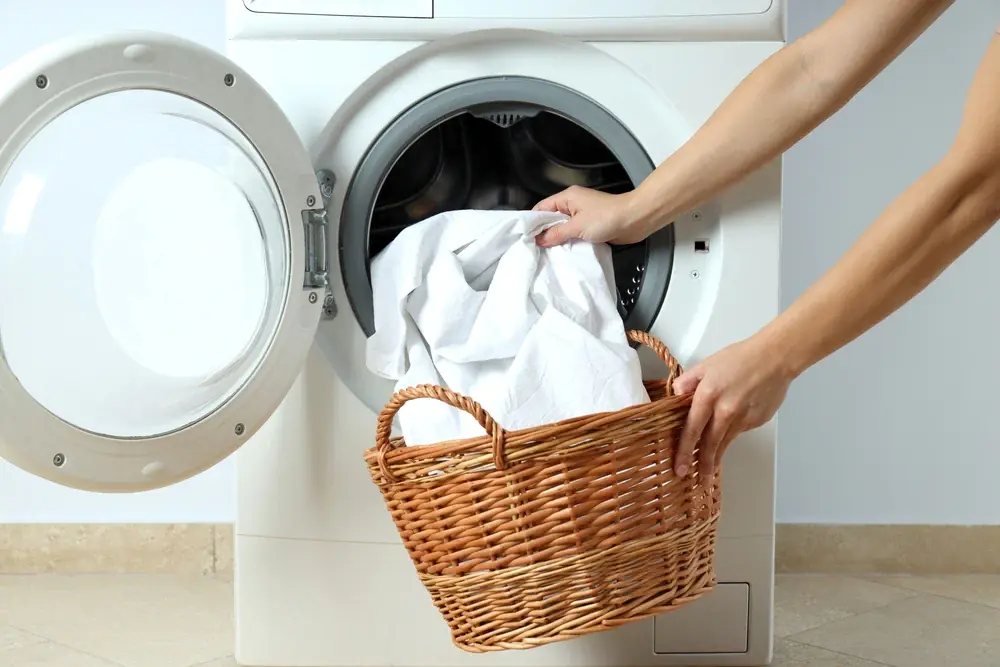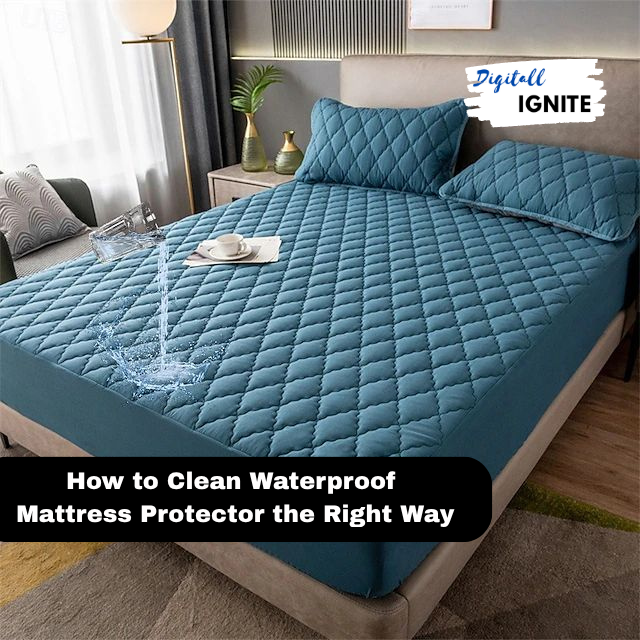- Learn how to clean waterproof mattress protector properly, including washing tips, frequency, and care instructions to keep your bed fresh and hygienic.
A clean bed isn’t just about fresh sheets—it starts with what’s underneath. If you’re wondering how to clean a waterproof mattress protector, you’re not alone. Many people assume these protectors don’t need regular care or can’t be washed, but the truth is, cleaning your mattress protector is essential to maintaining a healthy and odor-free sleep environment.
Whether you’re a busy parent, allergy sufferer, or someone who sweats during sleep, your mattress protector works hard to defend your mattress from moisture, bacteria, spills, dust mites, and more. But that also means it collects a lot of gunk over time.
In this guide, we’ll break down exactly how to clean a waterproof mattress protector, how often you should wash it, and how to avoid damaging its waterproof properties in the process.
🧼 Why Cleaning Your Mattress Protector Matters
Even though you can’t see it, your mattress protector absorbs:
- Sweat and body oils
- Skin cells and allergens
- Accidental spills or pet messes
- Dust and bacteria
If left unwashed, your protector can develop odors, lose its protective qualities, and even contribute to poor sleep quality.
Key Benefits of Cleaning:
- Improves hygiene and reduces allergens
- Maintains waterproof barrier
- Prevents mold, mildew, and bacteria buildup
- Extends the life of both the protector and your mattress
So if you’ve been putting it off, now is the perfect time to give your protector a good clean.
🧺 How to Clean a Waterproof Mattress Protector
Cleaning a waterproof mattress protector isn’t difficult, but it must be done correctly to avoid damaging the waterproof membrane or elastic sides.
Here’s a step-by-step breakdown:
1. Check the Care Label

Before doing anything, read the manufacturer’s instructions. Different brands may use different materials or waterproof linings like polyurethane or vinyl, which have specific cleaning requirements.
2. Pre-Treat Any Stains
If your mattress protector has visible stains (like coffee, urine, or blood), pre-treat those areas using a gentle stain remover:
- Use enzyme-based cleaners for organic stains
- Dab with cold water and mild detergent for protein-based stains
- Avoid bleach, as it may break down the waterproof layer
Let the treatment sit for 10–15 minutes before washing.
3. Machine Washing Mattress Protector

Most waterproof mattress protectors are machine washable. Use the following guidelines:
- Washer setting: Gentle or delicate cycle
- Water temperature: Cold or lukewarm (never hot!)
- Detergent: Mild, bleach-free detergent
- Load size: Wash alone or with light items to prevent stretching
Avoid using fabric softeners or strong chemicals, as they can damage the waterproof lining.
4. Drying the Mattress Protector
Drying is where most mistakes happen. The heat from high-temperature drying can melt or crack the waterproof membrane.
- Tumble dry: Low heat or air-dry setting
- Best method: Air drying outdoors or on a rack
- Avoid: High heat, irons, and dry cleaning
To maintain its shape, you can reshape the corners or elastic edges while it’s still damp.
5. Final Checks Before Putting It Back On
After washing and drying:
- Check that the protector is completely dry to prevent mildew
- Hold it up to light to see if the waterproof layer is intact
- Reapply to your mattress and make sure it fits snugly
Also Read: Top Best Microphone for Streaming in 2025
🔁 How Often to Wash Mattress Pad and Protector?
So how frequently should you clean it?
| User Type | Recommended Wash Frequency |
| Average Sleeper | Every 2 months |
| Allergy Sufferer | Every 2–3 weeks |
| Pet Owner | Every 2–4 weeks |
| After Spills/Accidents | Immediately after the incident |
| Summer Months | More frequently due to sweating |
Even though you may not see dirt, it’s always there. Regular cleaning helps prevent buildup of allergens and keeps your mattress fresh for years.
🛏️ Difference Between Mattress Pads and Mattress Protectors
The terms are often used interchangeably, but they serve different purposes:
- Mattress Pad: Adds softness and slight protection; not always waterproof
- Mattress Protector: Shields against liquids, allergens, and dust; often waterproof
If you’re wondering about washing mattress pad vs. protector, the process is quite similar, but mattress pads often tolerate slightly warmer water and higher heat during drying—always check the label.
❌ Common Mistakes to Avoid
- Using Hot Water or High Heat Drying: This can destroy the waterproof layer.
- Skipping Pre-Treatment: Stains can set in permanently.
- Overloading the Washer: Leads to stretching and damage.
- Using Bleach or Fabric Softeners: These can ruin the membrane and reduce absorbency.
Protectors are more delicate than they seem—gentle care is key.
🧴 Natural Cleaning Options (Optional)
If you’re sensitive to detergents or want an eco-friendly option:
- Use a mixture of vinegar and baking soda for light stains and odor control
- Essential oils like tea tree or lavender can be added to rinse cycles for a fresh scent
- Let it dry in the sunlight, which naturally disinfects and deodorizes
✅ When to Replace Your Mattress Protector
Even with good care, mattress protectors aren’t forever. Over time, their waterproof layer may break down or become less effective.
Replace your mattress protector if:
- The waterproof backing cracks or peels
- It no longer fits snugly
- It starts to retain odors even after washing
- It’s been over 2–3 years of frequent use
🧾 Summary: Clean Bed, Better Sleep
Let’s face it—mattress protectors are your mattress’s first line of defense. Knowing how to clean waterproof mattress protector properly not only extends its life but also ensures you’re sleeping in a healthy, odor-free bed.
✅ Quick Recap:
- Wash your waterproof protector every 1–2 months
- Use cold water, gentle detergent, and air dry or low heat
- Pre-treat any stains with enzyme cleaners
- Avoid bleach and hot settings to preserve waterproofing
- Replace every 2–3 years for best results
With these steps, you’ll protect your investment, enjoy cleaner sleep, and avoid bacteria and allergens—all while extending the lifespan of your mattress.



